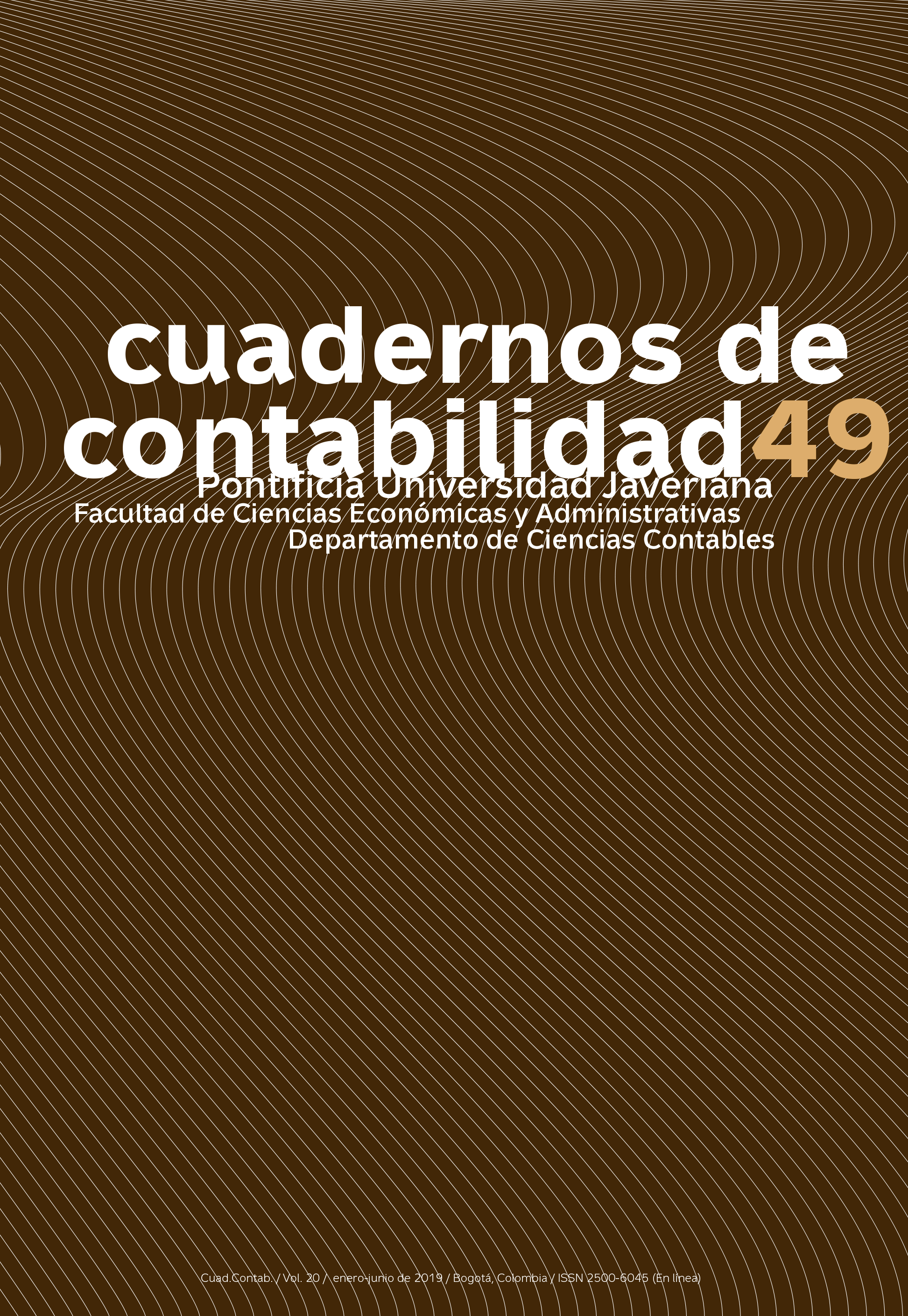Importance of Corporate Governance in Popular Finance Companies in Mexico
##plugins.themes.bootstrap3.article.details##
The popular savings and credit sector in Mexico has been characterized by low participation in the financial system; however, at the beginning of this century it showed great dynamism amidst a weak regulatory environment that led to the proliferation of alleged savings banks. For the year 2001, Mexico had 630 savings and credit entities with more than two million members. Therefore, it was essential to regulate this sector through the Popular Savings and Credit Law on June 4, 2001, in addition to reforming the General Law of Cooperative Societies. It should be mentioned that there must be a commitment on the part of companies to comply with the regulations on Corporate Governance, and that the administrators and managers of the Popular Financial Societies –SOFIPO– regularly and recurrently integrate Corporate Governance practices on its strategy of growth, strengthening and permanence in the sector.
Popular savings and credit, popular financial company, corporate governanceahorro y crédito popular, gobierno corporativo, sociedad financiera popularpoupança popular e de crédito, empresa financeira popular, governança corporativa
Aoki, M. & Hugh, P. (1994). The Japanese main bank system and it's relevancy for developing and transforming economies. Oxford University Press. DOI: https://doi.org/10.1093/0198288999.001.0001.
Baek, H., Johnson, D. & Kim, J. (2009). Managerial ownership, corporate governance, and voluntary disclosure. Journal of Business and Economic Studies, 15(2), 44-61. https://pdfs.semanticscholar.org/3b95/f12027fdb93d35c3e5f6817c70b92c9fb685.pdf.
Barney, J. (1990). The debate between traditional management theory and organizational economics: Substantive differences or intergroup conflict? Academy of Management Review, 15(3), 382-393. DOI: https://doi.org/10.5465/AMR.1990.4308815.
Barroso, C., Dominguez, M., Vecino, J. & Villegas, M. (2009). Does the team leverage the board ́s decisions? Corporate Governance: An International Review, 17, 744-761. https://www.sciencedirect.com/science/article/pii/S1135252312600379.
Cadbury, A. (1992). Report of the Committee on the Financial Aspects of Corporate Governance. London: Gee & Co. Ltd. DOI: https://doi.org/10.4236/jfrm.2019.82005.
Cadbury, A. (2002). Corporate Governance and Chairmanship: a Personal View. London: Oxford University Press. DOI: https://doi.org/10.4236/jfrm.2019.82004.
Cano, A. (2005) Gobierno corporativo como estrategia de desarrollo para evitar la corrupción empresarial. X Foro internacional de investigación en contaduría, administración y sistemas, México D.F. Memorias. Revista Contaduría y Administración, 217, 68-72.
Cano, A. (2007). Gobierno corporativo. Principales desarrollos en las empresas que cotizan en la Bolsa de Valores de Colombia. Medellín: Editorial Universidad de Medellín.
Cano. A. (2004). El gobierno corporativo y su influencia en el ambiente económico colombiano. Observatorio de la Economía Latinoamericana, 33, octubre. Texto completo en http://www.eumed.net/cursecon/ecolat/co/. Consultado el 7 de diciembre de 2018.
Cerbioni, F. & Parbonetti, A. (2007). Exploring the effects of corporate governance on intellectual capital Disclosure: An analysis of European biotechnology companies. https://doi.org/10.1080/09638180701707011
Denis, D. (2001). International corporate governance. Journal of Financial and Quantitative Analysis, 38, 1-36. DOI: https://doi.org/10.2307/4126771.
Dick, I. (2000). Ownership Structure, Legal Protections and Corporate Governance. Working Paper, Harvard University, pp. 174-192. https://dash.harvard.edu/handle/1/39526299.
Donaldson, L. (1990). The Ethereal hand: Organizational economics and management theory. Academy of Management Review, 15(3), 369-381. DOI: https://doi.org/10.5465/AMR.1990.4308806.
Donaldson, L. & Davis, J. (1991). Stewardship Theory or Agency Theory: CEO Governance and Shareholder Returns. Australian Journal of Management, 16, 49-64. DOI: https://doi.org/10.1177/031289629101600103.
Dyck, I. (2001). Ownership structure, legal protections, and corporate governance. Annual World Bank Conference on Development Economics. The International Bank for Reconstruction and Development, Washington, 291-329.
Fernández-Rodríguez, J. (2004). Desempeño de las empresas propiedad de sus trabajadores: ¿Un modelo de gobierno corporativo laboral? INNOVAR. Revista de Ciencias Administrativas y Sociales, 22(43), 33-43. Recuperado de http://www.redalyc.org/articulo.oa?id=81824123004.
Franks, J. & Colin, M. (1996). Hostile takeovers and the correction of managerial failure. Journal of Financial Economics, 40(1), 147-159.
Jensen, M. & Meckling, W. (1976). Theory of the firm: Managerial behavior, agency costs and ownership structure. Journal of Financial Economics, 3. https://doi.org/10.1016/0304-405X(76)90026-X.
Jensen, M. (2001). Value maximization, stakeholder theory, and the corporate objective function. Working Paper No. 01-09, Amos Tuck School of Business at Dartmouth College. https://doi.org/10.1111/j.1745-6622.2001.tb00434.x
Kirkpatrick, G. (2009). The corporate governance lessons from the financial crisis, Paris, OECD Steering Group on Corporate Governance. https://econpapers.repec.org/article/oecdafkad/5ksgjzphdv0x.htm.
La Porta, R. (2001). Comment on “Ownership structure, legal protections and corporate governance” by A, Dyck. Annual World Bank Conference on Development Economics. The International Bank for Reconstruction and Development, Washington, pp. 361-370. https://doi.org/10.1016/j.jfineco
Lander, G. (2004). What is Sarbanes Oxley? New York: McGraw-Hill.
López de Silanes, F. (1999). Corporate Governance ¿incentiva o frustra el mercado de capitales? Memorias. I Congreso Nacional de Mercado de capitales. Bolsa de Bogotá, Dinero, en asocio con Universidad de los Andes, Asociación de Fiduciarias, Bogotá noviembre 4 y 5.
Mayer, C., Franks, J. & Renneboog, L. (2001). Who disciplines management in poorly performing companies? Journal of Financial Intermediation, 10, 15-43.
Miwa, Y. & Ramseyer, J. (2001). The myth of the main bank: Japan and comparative corporate governance. Discussion Paper 333, Harvard Law School.
Nuevo Código de Comercio (2003). Editorial Legis S.A.
OCDE - Organización para la Cooperación y el Desarrollo Económico (1999). OECD Principles of Corporate Governance. https://www.oecd.org/daf/ca/corporategovernanceprinciples/31557724.pdf
OCDE - Organización para la Cooperación y el Desarrollo Económico (2004). White Paper sobre Gobierno Corporativo en Latinoamérica. Publicado bajo convenio con la OECD, París.
Pfeffer, J., & Salancik, G. R. (1978). The external control of organizations: A resource dependence perspective. New York: Harper & Row. Doi: https://doi.org/10.1177/0892020615586805.
Shleifer, A. & Vishny, R. (1997). A Survey of Corporate Governance. Journal of Finance, 52(2), 737-783. https://doi.org/10.1111/j.1540-6261.1997.tb04820.x
The Economist Intelligence Unit, 2002. Corporate Governance. The New Strategic Imperative. The Economist Intelligence Unit Limited. http://dx.doi.org/10.1108/02686901111151323
Weinstein, D. & Yafeh, Y. (1998). On the costs of a bank – Centered financial system: Evidence from the changing main bank relations in Japan. Journal of Finance, LIII(2), 635-672. https://doi.org/10.1111/0022-1082.254893
Zingales, L. (1997). Corporate Governance. Working Paper 6309, NBER, 125-149. DOI: https://doi.org/10.1432/77792:y:2014:i:1-2:p:187-216.

